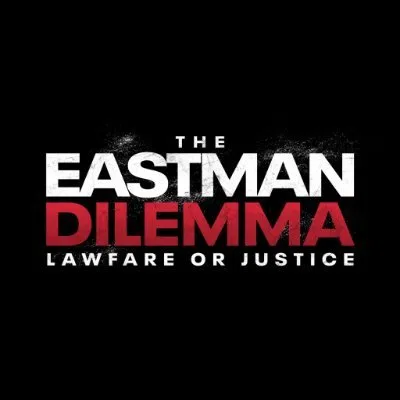(BUFFALO, N.Y.) — While testifying in front of a federal commission last summer, Professor Henry Louis Taylor issued a startling summation of the evidence he said he’s drawn from the racially motivated May 14, 2022, mass shooting at a supermarket on Buffalo’s predominantly Black east side.
Taylor, director of the Department of Urban and Regional Planning at the University at Buffalo, told the Equal Employment Opportunity Commission gathered in Buffalo that he believes the massacre was linked to decades of segregation and inequality in the city that made the gunman’s target an easy find.
“This white supremacist knew only one supermarket serviced the east side’s 68,000 Black residents. He knew shoppers would fill the store that Saturday afternoon,” Taylor said. “Ironically, white racism fueled the shooter’s racial hatred and white racism also created the marginalized, underdeveloped neighborhood conditions that drew him to the city.”
Taylor and his team of researchers found in two reports 31 years apart that the city’s Black population has made little progress in achieving equality and curbing segregation. Disparities in education, employment, income and home ownership channeled 85% of Buffalo’s Black residents into “the worst residential lands in the region,” according to Taylor’s research.
Little progress has been made on the east side in the year since the deadly rampage, Taylor said.
“The current state of the east side of Buffalo is the same as it was this time last year. The trajectory continues to go downward. The process of development that’s occurring on Buffalo’s east side continues to ignore root causes, the needs and the aspirations of the residents,” Taylor told ABC News recently. “Given the way in which the city of Buffalo is approaching investments on the east side, I can say with a great deal of certainty that nothing substantive will change in the community in the foreseeable future.”
Case in point, he said, was the major blizzard that stuck Erie County in late December, killing 47 people, including 39 in Buffalo, most of them on the east side.
“African Americans comprise 13% of the entire population of Erie County and constituted more than 50% of the fatalities in that part of the city,” Taylor said about the east side.
Since the Tops massacre, many community leaders said they are determined to expedite existing efforts to build a more equitable east side with initiatives to curb the high school dropout rate and boost the number of students seeking higher education. Other efforts include a Black entrepreneur moving forward with plans to open an east side co-op grocery store to provide fresh produce and living-wage jobs to locals and represents what Taylor said he hopes is a “turning point.”
State and federal elected leaders said they are determined to help Buffalo, specifically the east side.
Rep. Brian Higgins, whose congressional district encompasses Buffalo, said $1.1 billion in federal and state funds has been delivered to the city to support long-term investments on the east side “that will create jobs, support businesses, revitalize homes, and reconnect neighborhoods.”
Just days before the mass shooting, local and state leaders announced the commitment of $1 billion to cover the below-grade section of the Kensington Expressway, which was built decades ago and cut the east side in half, with a tree-covered parkway reconnecting the community.
“As the East Buffalo community continues to recover from the white supremacist terrorist attack last May, Governor Hochul has taken action to right the wrongs of the past and address the immediate and long-term needs of the East Buffalo community working with our partners in local government, from housing to food programs to support for small businesses, career training programs and reconnecting neighborhoods divided by a highway,” a spokesperson for Gov. Kathy Hochul said in a statement to ABC News.
Buffalo Mayor Byron Brown, elected the city’s first Black mayor in 2006, told ABC News that “millions and millions of dollars” have been invested in the east side community in the 17 years he has been in office and that the area has “improved dramatically.” But he conceded there is still a long way to go.
“When you start way behind what other communities look like, it’s hard to make up for the fabric that exists elsewhere,” Brown said.
While community activists like Taylor say the Tops massacre exposed the numerous inequalities of the east side, Brown countered, “the shooting really didn’t reveal any disparities that people didn’t know existed already.”
“The issues of health inequity, food insecurity, economic inequity, those are age-old issues,” Brown said, adding that many large cities are plagued by similar issues.
Brown, who lives on the east side, said that when he took the reins of the city, there were more than 5,000 vacant, dilapidated structures dotting the east side, many of them damaged during a race riot that occurred in 1967. He said he had most of the ramshackle structures, which the city took over, demolished, leaving empty lots, many that still exist.
While serving in the 1990s as a member of the City Common Council, the equivalent of a city council, one of his projects was to bring a supermarket to the east side, getting Tops to open a store on Jefferson Avenue in 2003.
Still, some east side residents criticize the mayor for not doing enough, noting neighborhoods elsewhere in the city are bustling with commerce.
“Finger pointing to any one entity is not going to get the job done. It requires massive resources. It requires people working together and it requires a sound, strategic plan to spend money wisely and make the people that live in East Buffalo the authors of their own story,” said Brown, adding that federal, state and county government, as well as the private sector and nonprofits have a role in making that happen.
“So, with the amount of resources that are coming in, there should also be a spirit of hope and optimism that we can be better than we’ve been in a long time, perhaps better than we have ever been as a city and as an East Buffalo community,” Brown said.
‘Housing Zombieland’
Taylor’s first report, titled “The State of Black Buffalo” and released in 1990, found an 18% unemployment rate, an average household income of $39,350, that 38% were living below the poverty line and only 33% of Black residents owned their own homes.
His follow-up report, titled “The Harder We Run” and released in September 2021, found scant improvement for Buffalo’s Black community. Unemployment remained in double digits at 11%, the average household income nudged up to $42,000, 38% were living below the poverty line and Black home ownership fell to 32%. “There are still more Blacks without a high school diploma than with a college degree,” according to Taylor’s research.
The economic disparities have turned the east side of Buffalo into what Taylor’s latest report describes as a “housing Zombieland” with hundreds of city-owned vacant and unkept lots, broken sidewalks and block after block of dilapidated houses, many occupied by Black people paying 35% to up to 70% of their monthly incomes on rent, Taylor said.
“There’s a tendency to normalize those conditions and when we normalize those conditions and think they’re part of some natural evolutionary process, in a way they disappear and we don’t see them for what they really are,” Taylor told ABC News. “But there’s nothing normal about all of this. If you want to know what racism really looks like, this is what it looks like. If Black lives did matter, these types of conditions would not exist.”
‘He made Black people mad’
The mass shooting at a Tops supermarket in the Cold Springs neighborhood on Buffalo’s east side left 10 Black people dead and three other people injured.
The mass murderer, self-professed white supremacist Payton Gendron, who is now 19, planned the massacre for months — including previously traveling to the store, a more than three-hour drive from his home in Conklin, New York — to scout the layout and count the number of Black people present, according to prosecutors.
Gendron pleaded guilty in November to 15 state charges, including murder and attempted murder. He is the first person in state history to be charged with domestic terrorism motivated by hate, which he also pleaded guilty to.
He was sentenced to life in prison without parole for each of the 10 victims he killed and 25 years for each of the three victims he shot and wounded.
In addition to the state case, Gendron is facing hate and domestic terrorism charges in federal court. His attorneys said he might consider pleading guilty if federal prosecutors agree not to pursue the death penalty.
“He traumatized the community. He created great pain and suffering. And he did something else: He made Black people mad,” Taylor said.
He said he hopes to see that anger turned into a fuel to correct disparities plaguing the east side.
“If we look 10, 15, 30 years down the line and the conditions that exist in Black Buffalo are the same, that would mean their sacrifice, their deaths, would have been meaningless,” Taylor said of the Tops massacre victims. “If on the other hand, we’re able to utilize their tragic, premature deaths as a springboard and use it to transform and change the surrounding community, then those deaths would have meant something.”
Mayor Brown said looking five years down the road, “I see a transformed east side of Buffalo.”
“In five years, there will be a dramatic difference that you will see,” Brown said. “Not only will the community look different, but opportunities for the people that live in East Buffalo will be different.”
Copyright © 2023, ABC Audio. All rights reserved.













